Yesterday, Xbox's presentation was broadcast and showed some incredible games they are working on. From Fable to Forza Motorsport to Avowed, Xbox is going into this year and next year quite strong, but the show stealer was easily Starfield.

Starfield is a gigantic open-world RPG from Bethesda Game Studios, the creators of acclaimed RPGs like Skyrim and Fallout. In the game, you will be able to explore more than 1000 planets where you will discover cities, explore bases, meet a wealth of characters, and embark on quests. You will be able to build your own outpost, as well as build out your ship.
The dedicated Starfield Direct showcased some of the game's gameplay features, worlds, stories, and more as it went deeper into what we can expect. Personally, I think the game looks incredible and I can't wait to dive in, but the question remains, will it be playable on the Steam Deck? While we don't personally know, we can speculate and use past data to come to an educated guess. So, let's take a look and see how Starfield could run on the Steam Deck.
Starfield - How it Could Run on the Steam Deck
Before I begin, this performance theorizing is purely an opinion and not indicative of the final release. We will not officially know performance until the game is released and in our hands, but until then, here is what we can gather from what we have in front of us:
The Developer's Past - Bethesda and the Open World
First, let's take a look at the developer and games they have released. Bethesda is known for making bigger open world games, and with this being a similar one, we can start to insinuate how Starfield could run. The most recent new games that came directly from Bethesda are Fallout 76 and, not counting the VR games, Fallout 4. While Fallout 76 was released more recently, I will be focusing on Fallout 4 more since Starfield will also be a single-player game.
With Fallout 4 automatically going onto the lowest setting, the game can hit 60 FPS without a cap, usually draining around 22W - 25W in cities, but it has some issues with loading in new spots and some framerate drops. Starfield will definitely not hit 60, but Fallout 4 being an 8 year old game and still struggling at times is notable. Out in the wild, the game hits around 13W - 17W drain at 60, which is significantly better, but Starfield will have much more expansive worlds and cities.
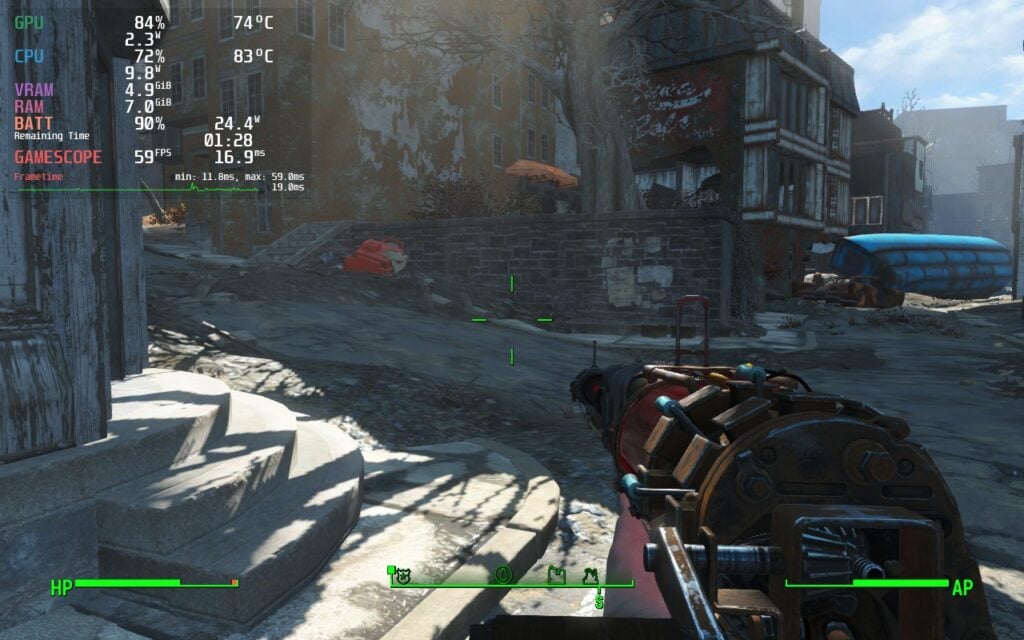
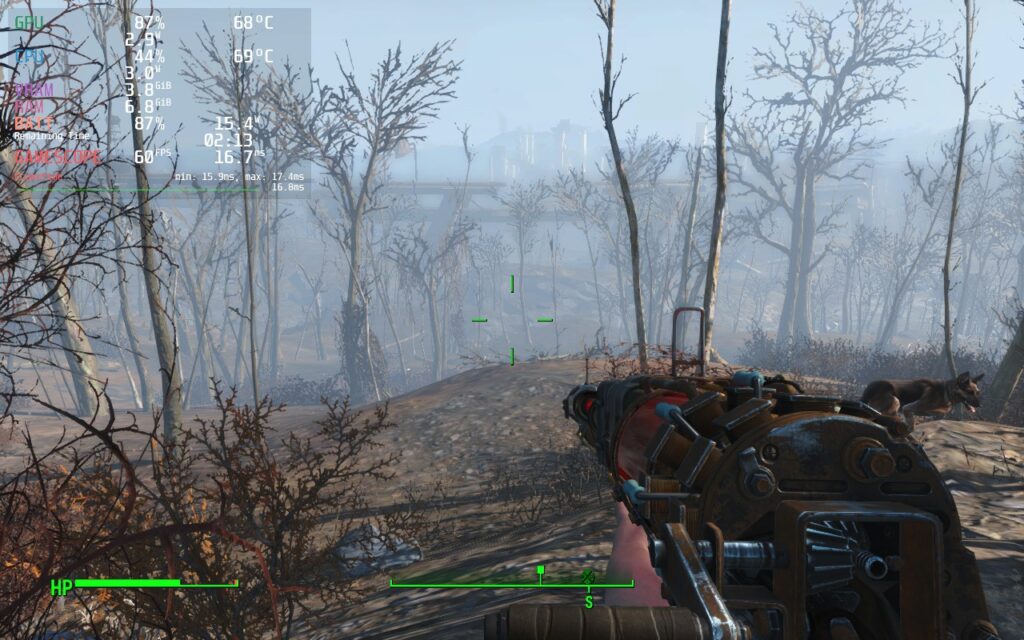
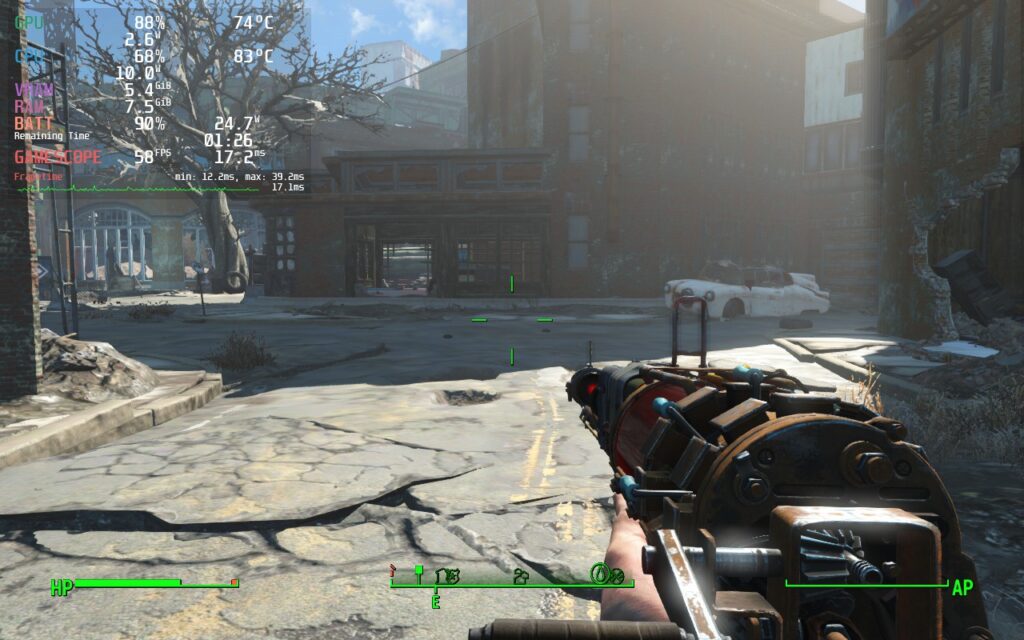
With this being an older game, I would have expected better performance overall, but it does have some issues. Bethesda is also known a bit for unoptimization in some areas, as well as bugs and such. With Bethesda not developing many games personally, this can be a bit up for debate on what it means for Starfield, but with unoptimization being an issue Bethesda is known for, it can be up in the air. The game performing decently okay overall, but I would say I am less on the optimistic side. Luckily, Starfield is using an upgraded version of the Creation Engine used for Fallout 4, so we can hope some optimization is included here.
The Minimum Specs
Next, I want to take a look at the minimum requirements that are posted on Starfield's Steam store page. It is pretty hefty so far with it saying the game will need 16gb of RAM, DirectX 12, an AMD Ryzen 5 2600x, and a Radeon RX 5700 / NVIDIA 1070 Ti. These are some hefty asks here, not to mention 125gb of available space and a SSD required. This means it will most likely need to be installed on the internal drive.
I couldn't find a perfect match for comparison between the specs, so I am going to look at 2 other open-world games that were released recently: Star Wars Jedi: Survivor and Forspoken. While neither of these perfectly hit the CPU mark, both games hit close to the GPU mark, recommend 16gb of RAM, require DirextX 12, and take up a ton of space. There also isn't one that I found that uses the same engine, so I went with two games that use proprietary engines like Starfield does. Theoretically, this should mean they will run better than Starfield based purely on a specification perspective, so let's look into it.
Star Wars Jedi: Survivor

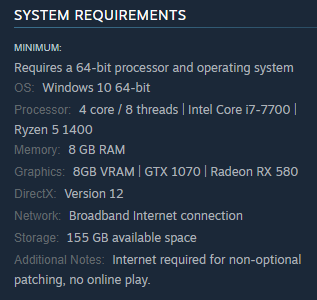
First, we took a look at Star Wars Jedi: Survivor on the Deck. Unfortunately, the game was not running quite well on the Steam Deck. With the lowest possible settings and FSR 2 at Ultra Performance, the game fluctuated wildly below 30 with some spots hitting it. The game didn't look amazing either, so I wouldn't consider this a worthwhile game to play on the Deck. Now Jedi: Survivor is a bit unoptimized as well, but it has seen some patches. Overall though, it didn't perform well.
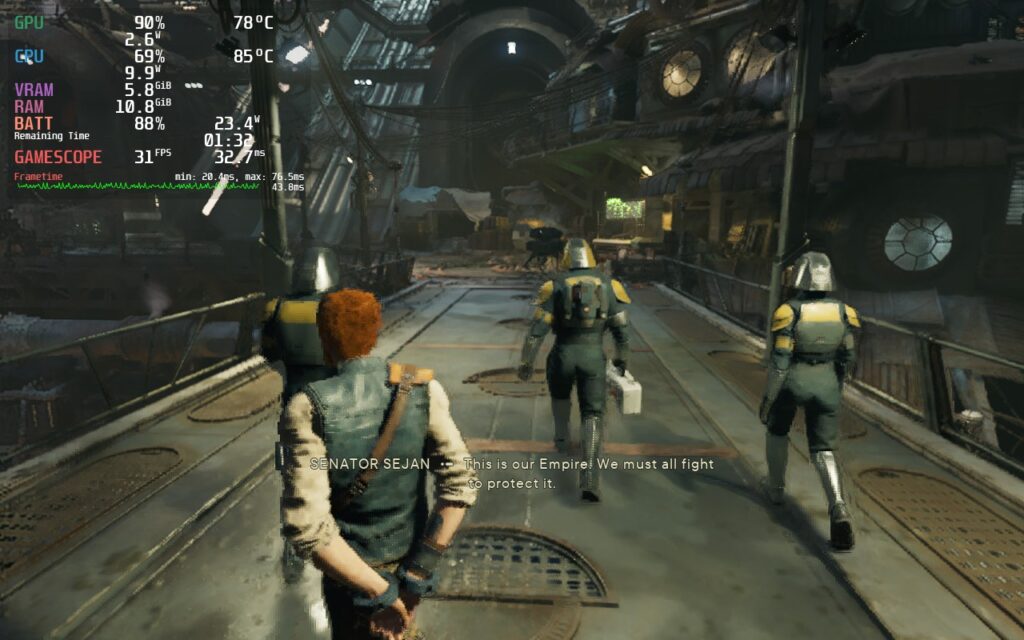
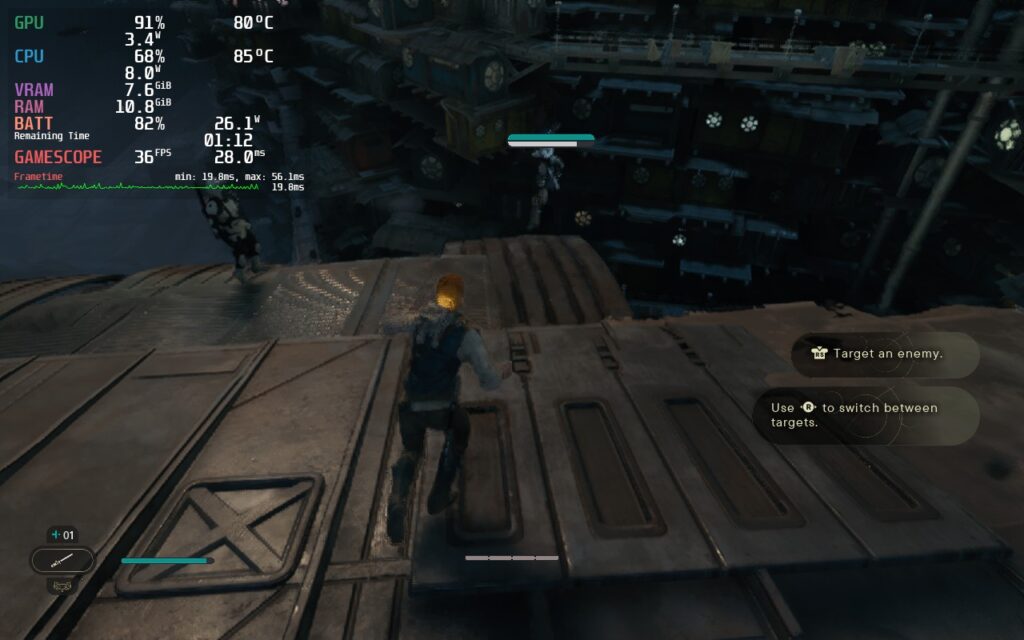
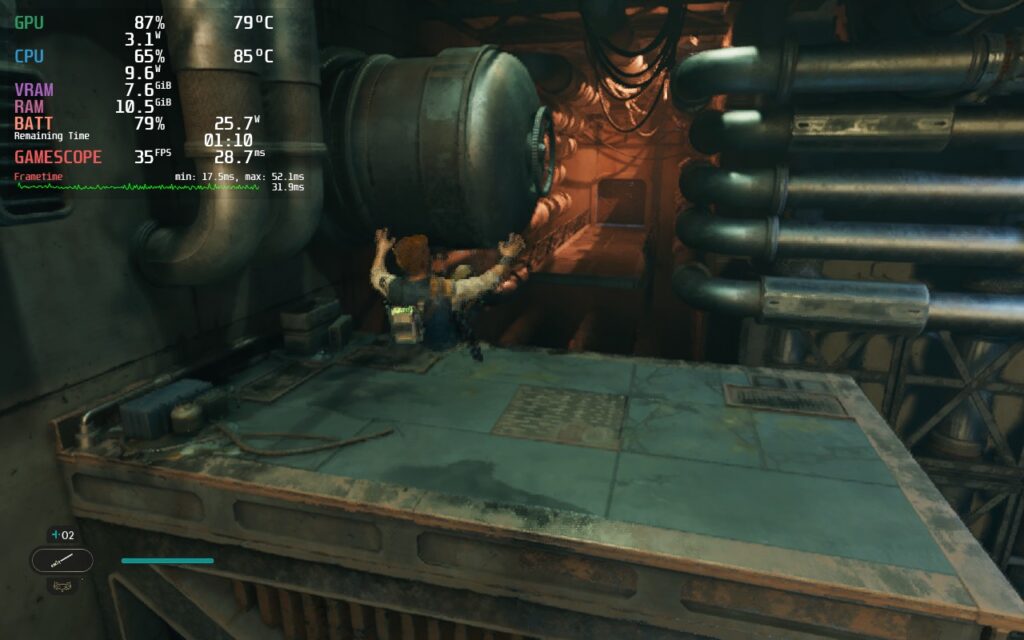
Forspoken

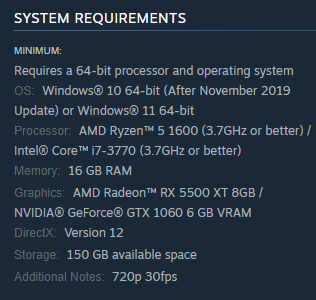
After Survivor, I took a look at Forspoken, Square Enix's most recent open-world RPG. Running around the world and looking around cities can average around 17W - 18W battery drain with 30 FPS, but getting into fights can start to show cracks. Some attacks can bring down framerate below 25 and drain battery around 23W. And yes, this is at the lowest settings possible, including FSR 2 on balanced.
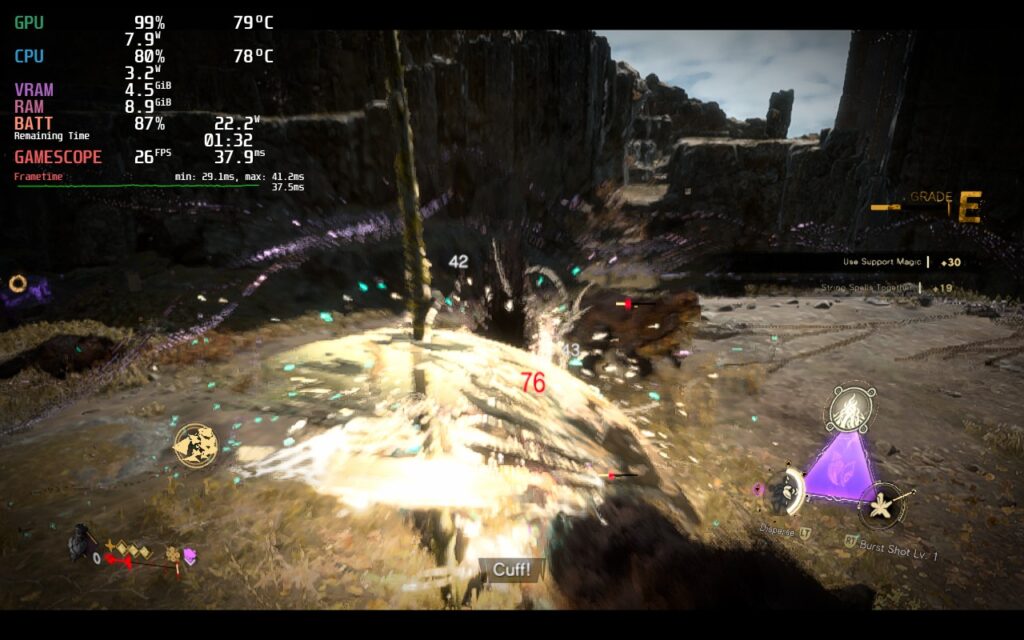
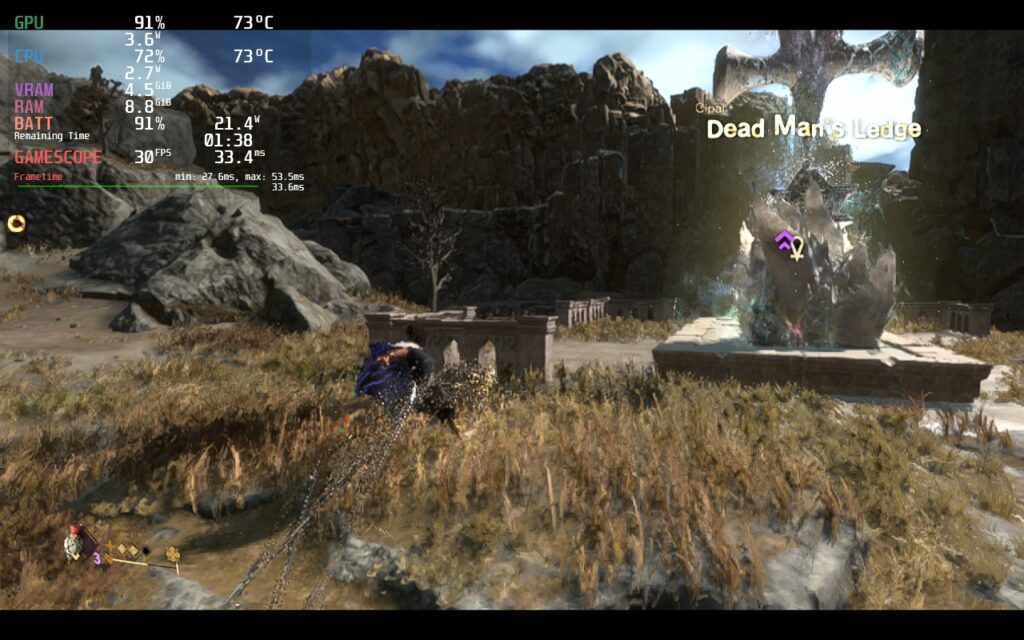
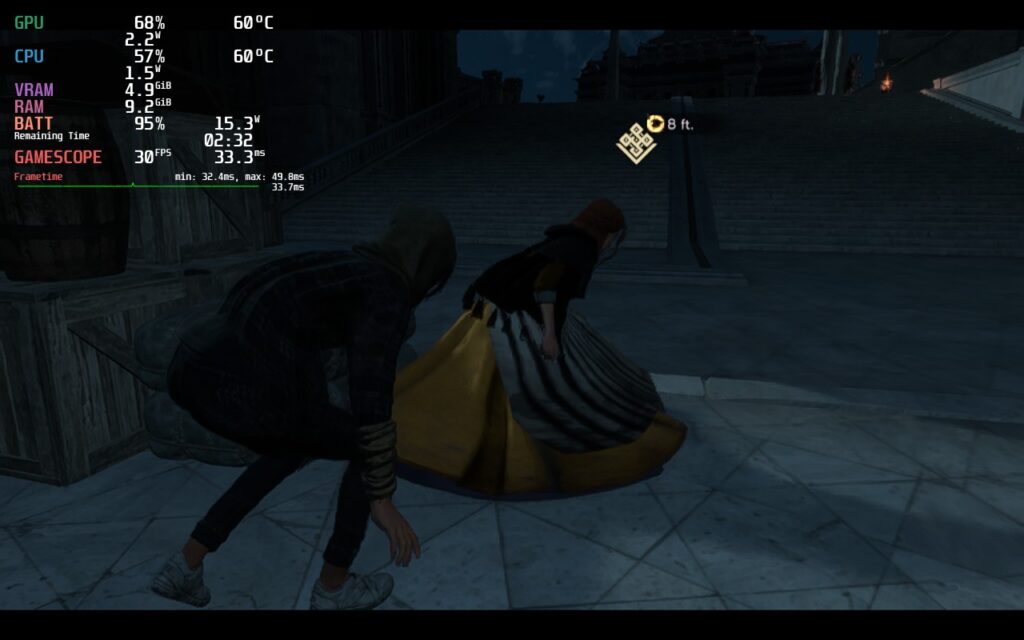
So what can this tell us? Well, games that have high GPU, RAM, and DirectX 12 requirements are hard to run. These should also, theoretically, run better than Starfield will, so them not running great doesn't bode well. But I will mention that neither have a modding community like Bethesda does, so that can help modify the game to run a bit better. It is also possible Starfield will be better optimized, but this is purely speculation. Overall, big AAA open-world games are tough to run on the Steam Deck, but with heavy downgrades, it could be possible.
Graphical Options
Finally, we take a look at graphical options. This is where we see if any upscaling tech will be used or what options the game will have. Starfield is still a bit away and there have been no announcements of whether the game will use upscaling tech, but we can look at other Bethesda-released games to get an idea.
Redfall, Ghostwire Tokyo, and Deathloop all utilize FSR 2 in their games to upscale, while DOOM Eternal and Wolfenstein: Youngblood use DLSS, an NVIDIA-exclusive upscaling tech. While we can't use DLSS on the Steam Deck, this does bode well for some upscaling being integrated into Starfield. On top of that, if there's only DLSS, there are mods that can hook onto it and enable FSR 2 upscaling, like the one created for Watch Dogs: Legion. There is even mods that can inject upscalers into games that don't have them, like the one created for Fallout 4 and Skyrim.
Update 6/27/23 - AMD has announced a partnership with Bethesda on Starfield, confirming FSR 2 will be coming to the game.
I also want to make note that Starfield will also be fully moddable like Skyrim and Fallout, so it is possible we will see some optimization mods from the community like we have from other games. But there's only so much that can be done here and the base game needs to be built well.
With these three points in mind, I believe that Starfield will just barely be playable on the Steam Deck. Low quality with 30 FPS lock, or possibly small sub 30 moments, and using FSR 2 or SteamOS FSR to some degree. Unoptimization is something Bethesda has a record with, but it has been some time since their last game. On top of that, newer games have started seeing integration of upscaling tech so, if Bethesda utilizes it well, performance will be much better. The specs are pretty beefy, especially the CPU requirement, but with new technology and a robust modding community, this can be circumvented.
I don't believe a stable 40 FPS will be possible at all though, so I wouldn't hold out hope. It is also possible the game will not look great to achieve a stable 30 and may not be worth it. Yes, Bethesda confirmed 30 FPS lock on consoles as well, but this most likely is for stability purposes and keeping visual quality high. But, with other Bethesda published games, as well as the modding capabilities, I believe it will be possible with a lot of compromises.
Starfield can be wishlisted and pre-ordered over on Steam for $70 or you can get the Premium Edition for $100 that comes with an expansion and early access to the game. If you have Humble Choice, you can also buy the standard version on Humble for 10% off ($63).
If you enjoyed this article, be sure to check out the rest of the content on SteamDeckHQ! We have a wide variety game reviews and news that are sure to help your gaming experience. Whether you're looking for news, tips and tutorials, game settings and reviews, or just want to stay up-to-date on the latest trends, we've got your back.




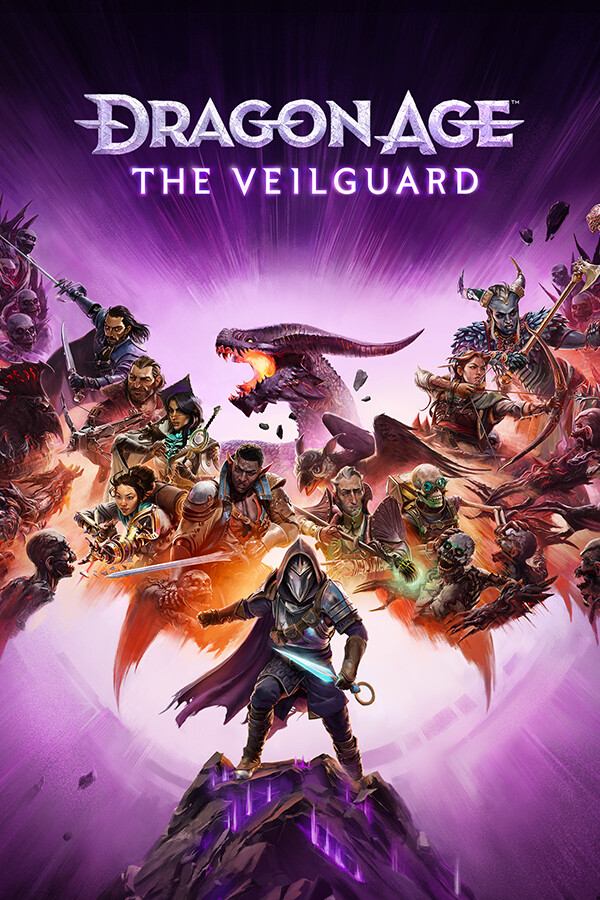
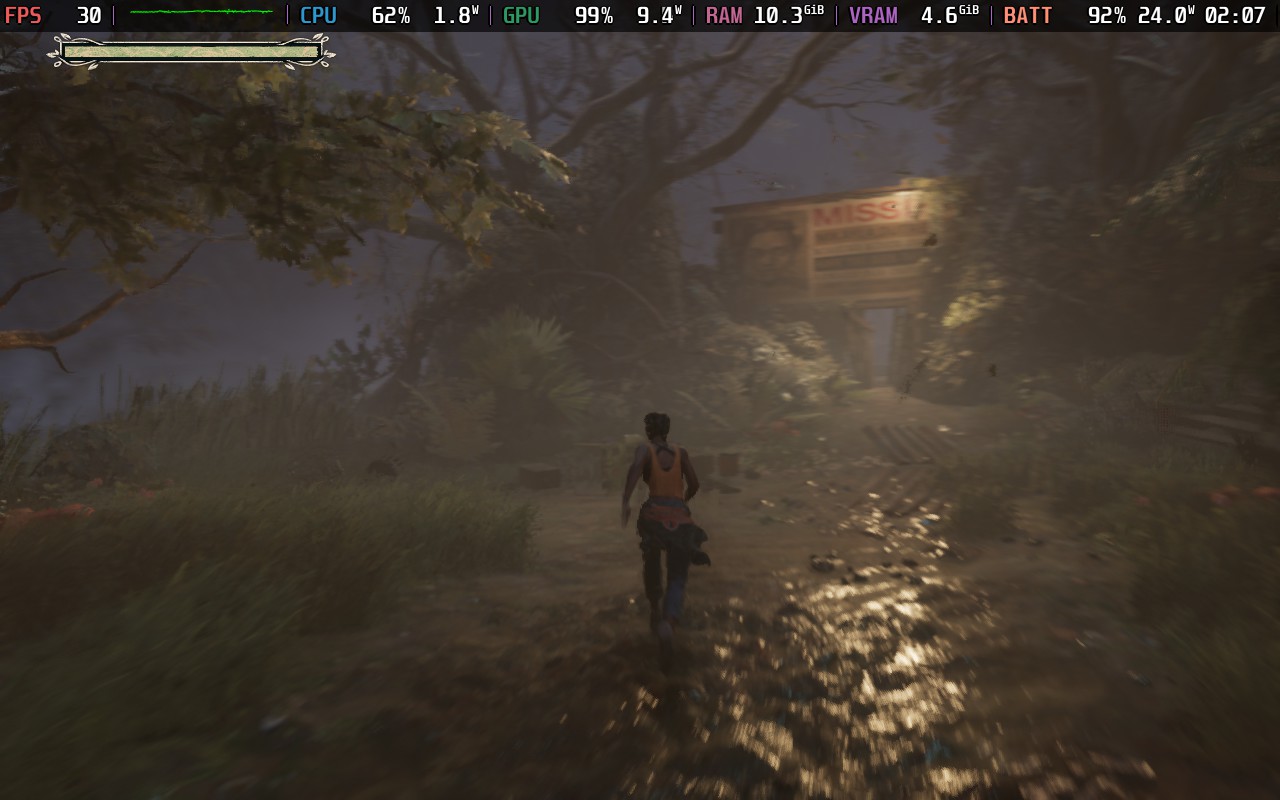
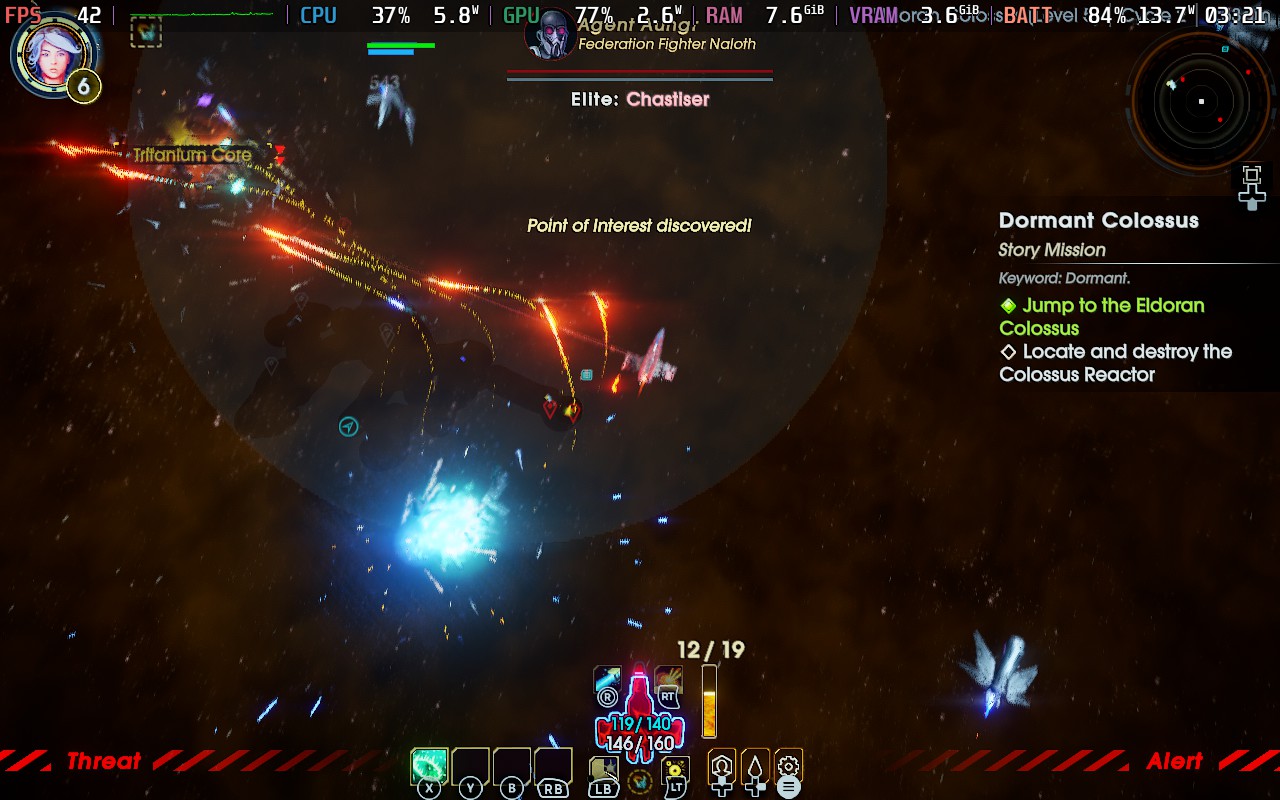
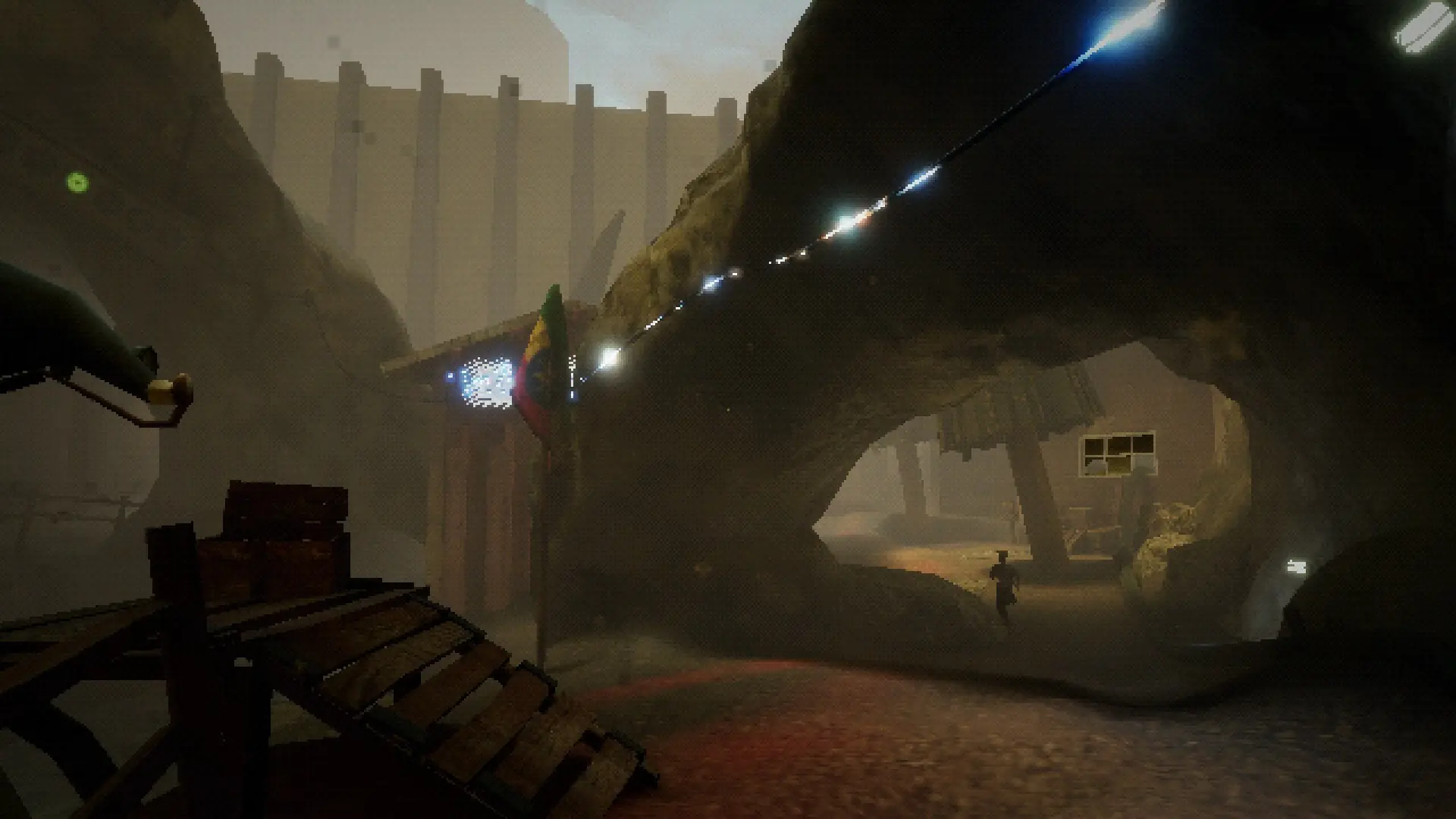

I think it'll be unplayable on Steam Deck at launch, but a little while after once modders get their teeth into it and Bethesda can focus on bug fixes and further optimisation, who knows? I think Microsoft is also very keen to make a good impression so we'll see!
Fallout 4 and Skyrim both show quite expansive environments, albeit with very aggressive level of detail, and they can handle multiple enemies at once, fairly detailed environments etc., so it's kind of weird that Starfield is so much more demanding. I'm also curious about the sheer size of it, though I know a lot of other games are huge too, but what's actually taking up the space?
Is it textures? Because with HEIC for image compression those shouldn't be take up all that much space (and would be quick to load from disk, though they need decompressing, it's basically the same as .h265 which modern GPUs support). We have new, better codecs for sound now too, meanwhile 3d models aren't that demanding on space, so where it's all going that a game can hit 125gb?
If they're dealing with a lot of uncompressed assets that'll definitely take a toll on the Steam Deck with its shared and comparatively slow/limited memory. Though if the Xbox Series X can target 4k at 30 fps (probably with upscaling from 1440p) you'd think the Steam Deck could chug along targeting 720p at 30 fps.
We will have to see, but I completely agree. I think modders will be the lifeline for this game on Deck. With the new engine, it is possible we are going to see much more complex systems with higher fidelity, but hopefully this will come with better scaling and options so we can go further down. Adding in some upscaling techniques in-game should help, would love to see good FSR 2 implementation myself. This is going to be a real test on the system, so I am excited to see how it will be. I do have some faith too, seeing as how the Series S is going for 30 FPS lock (probably with 1440p).
Also Valve will no doubt do their best to code in optimizations into Proton and Steam OS itself as they have for several other games - one of the major advantages of the Steam Deck’s open source OS. This in addition to their distributing pre-compiled shaders.
So I’m hoping they can get it running at least ok on Deck.
In addition, what about FSR 3 with frame gen? It is supposed to release this fall. Perhaps this could offer significant assistance to Starfield?
Finally there is Bethesda themselves. Perhaps they’d be willing to work with Valve on optimizing Starfield for the Deck to access the well over one million gaming enthusiasts in the Deck community. When asked about the Steam Deck Todd Howard said, “we’ll discuss that later” which sounds to me as if he is suggesting that it’s a very real possibility. Remember he has otherwise been honest and clear about what Starfield would NOT do. So if there was no chance it would run on Deck I believe he would have just said so as he did with other questions.
In any case I think that if it doesn’t run on Deck at launch that’s not the last word on the matter. Several games like TLOU & Dead Space could not run on Deck at launch due to performance issues but then eventually went on to become fully Steam Deck 🟢Verified.
And ultimately there are very few games that are rated 🚫Unsupported on Deck due to performance issues. I only know of three: Returnal, Jedi Survivor & Forspoken. So I remain optimistic.
Well my steam deck comes tommorrow and was hoping to play this on it. but failing that I have a gaming PC that runs every game in 4k ultra default settings as soon as i boot into a game. Ryzen 9 5900x and Rx 6800 with 32 gb Ram and 16 Gb Vram. so I will just play it on that. and if it works on the deck all good.
The game will still be playable via Cloud streaming from Game Pass if you have it there, but yeah I think it will be a bit tough. But with the modding community, I have a lot of faith it will be possible with time.
It should be possible to run the game via xcloud streaming on the steam deck which should give good performance if you have a good internet connection.
True, though it is relying on Internet connections, which isn't viable to everyone!
More importantly will it run on the RoG Ally😁
Way more likely on Turbo mode!
"There also isn't one that I found that uses the same engine, so I went with two games that use proprietary engines like Starfield does."
Both Star Wars Jedi: Fallen Order and Star Wars Jedi Survivor run on Unreal Engine 4.
You're so right! That's my bad. Let me fix that. Totally forgot about that.
Wonderful analysis, I would just like to add to take Dead Space Remake into account as well. As hardware requirements it is very similar to Starfield (16Gb of Ram, GTX1070), but manages to run 40-50FPS with FSR active. Obviously they are very different games, but the specifics are still the same.
That's a fair point, but the scope is slightly different. The game takes place in tighter corridors, while Starfield will be fully open, which will be a bit harder on the system. I believe it's easier to run Dead Space over Starfield and other open-world games. It is notable for RAM requirements though, which is good to have an idea of.
Thank you for your kind words <3